- Importance of Wintering for Hydrangea Large-Leaved in a Container
- Step 1: Inspecting the Container and Soil
- Step 2: Pruning and Trimming the Hydrangea Large-Leaved
- Step 3: Checking for Pests and Diseases
- 1. Inspect the leaves and stems
- 2. Look for pests
- 3. Check for diseases
- 4. Take necessary actions
- Step 4: Fertilizing and Watering the Hydrangea Large-Leaved
- 1. Fertilizing
- 2. Watering
- 3. Mulching
- 4. Monitoring and Adjusting
- Step 5: Providing Adequate Sunlight and Temperature
- Questions and Answers:
- When should I start taking care of my hydrangea after wintering?
- What should I do if the hydrangea has been damaged by frost?
- How often should I water my hydrangea in a container?
- Can I fertilize my hydrangea in a container?
- Should I provide any additional protection for my hydrangea in a container during the winter?
- Videos: How to Plant Hydrangeas in Containers
Hydrangeas are popular flowering plants known for their large, showy blooms and lush foliage. One variety, known as the large-leaved hydrangea, is particularly stunning with its oversized flower heads and vibrant colors. Many gardeners choose to grow large-leaved hydrangeas in containers, as this allows them to control the plant’s environment and easily move it around their outdoor space.
After wintering, it is important to take certain steps to ensure the health and vitality of your large-leaved hydrangea in a container. First and foremost, you should assess the condition of the plant. Check for any signs of damage or disease, such as wilted or discolored leaves. If necessary, prune away any dead or unhealthy branches.
Next, you should consider the hydration needs of your hydrangea. Large-leaved hydrangeas require a consistent level of moisture, so it is important to water accordingly. Be sure not to over-water, as this can lead to root rot. Instead, aim for a balance of moist but well-draining soil.
In addition to watering, it is also important to provide your hydrangea with the necessary nutrients. Use a slow-release fertilizer formulated specifically for hydrangeas, following the instructions on the packaging. This will help promote healthy growth and abundant flowering.
Finally, consider the location of your hydrangea container. Large-leaved hydrangeas thrive in partial shade or filtered sunlight, so avoid placing the container in direct, harsh sunlight. Additionally, be mindful of the temperature and humidity levels in your area. Large-leaved hydrangeas prefer moderate temperatures and high humidity.
By taking these essential steps after wintering, you can ensure that your large-leaved hydrangea in a container will continue to thrive and provide you with beautiful blooms throughout the summer months. With proper care and attention, you can enjoy the stunning beauty of this popular flowering plant year after year.
Importance of Wintering for Hydrangea Large-Leaved in a Container
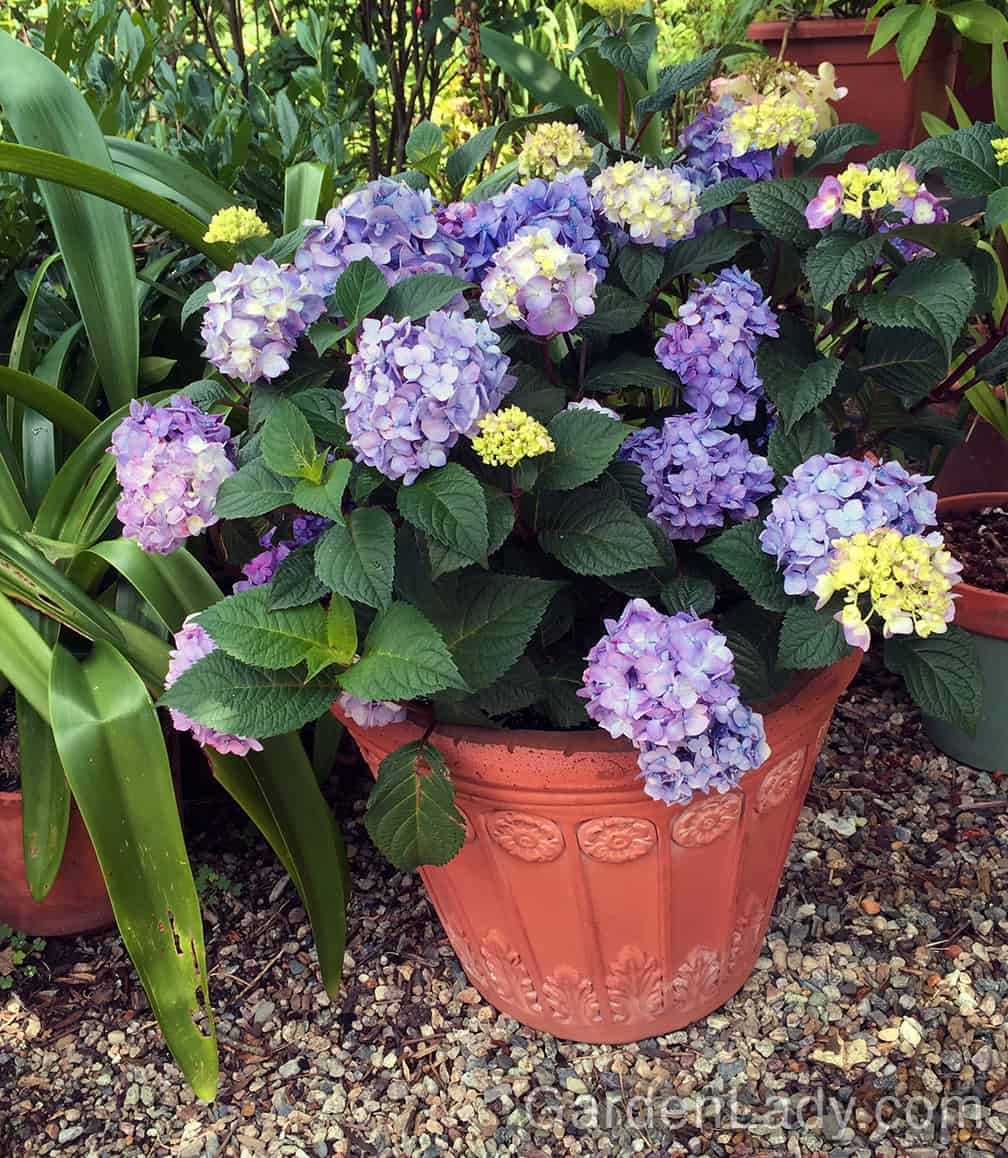
Wintering is a crucial step in maintaining the health and vitality of Hydrangea Large-Leaved plants grown in containers. The cold winter temperatures can be extremely harsh on these plants, and without proper wintering care, they may suffer from frost damage and other issues.
There are several reasons why wintering is important for Hydrangea Large-Leaved in a container:
- Protection against Frost: During the winter, freezing temperatures can damage the roots and tender shoots of the Hydrangea Large-Leaved plant. By providing proper insulation and protection, wintering helps prevent frost damage.
- Promotes Plant Health: Wintering allows the Hydrangea Large-Leaved plant to enter a state of dormancy, which is essential for its overall health and survival. This rest period helps conserve energy and resources, preparing the plant for the upcoming growing season.
- Prevents Soil Freezing: In containers, the soil can freeze more easily compared to plants in the ground. This can lead to root damage and hinder the plant’s ability to take up water and nutrients. Wintering helps prevent the soil from freezing and ensures the plant’s roots stay protected.
- Reduces Disease and Pest Risks: By wintering the Hydrangea Large-Leaved plant, it can be inspected for any signs of disease or pests. This enables early detection and treatment, reducing the risks of infestations and disease outbreaks.
Proper wintering care for Hydrangea Large-Leaved in a container typically involves:
- Trimming: Pruning any dead or damaged branches helps improve the plant’s overall appearance and encourages new growth in the spring.
- Insulation: Wrapping the container in insulating material, such as burlap or bubble wrap, helps protect the plant from extreme cold temperatures.
- Watering: While the plant is dormant, it still requires some water to prevent dehydration. However, overwatering should be avoided to prevent root rot.
- Placement: Choosing an appropriate location for wintering, such as a sheltered area or unheated garage, helps protect the plant from harsh winter winds and temperature fluctuations.
By taking these essential steps to winter Hydrangea Large-Leaved plants in containers, gardeners can ensure the plants’ survival and promote their long-term health and beauty.
Step 1: Inspecting the Container and Soil
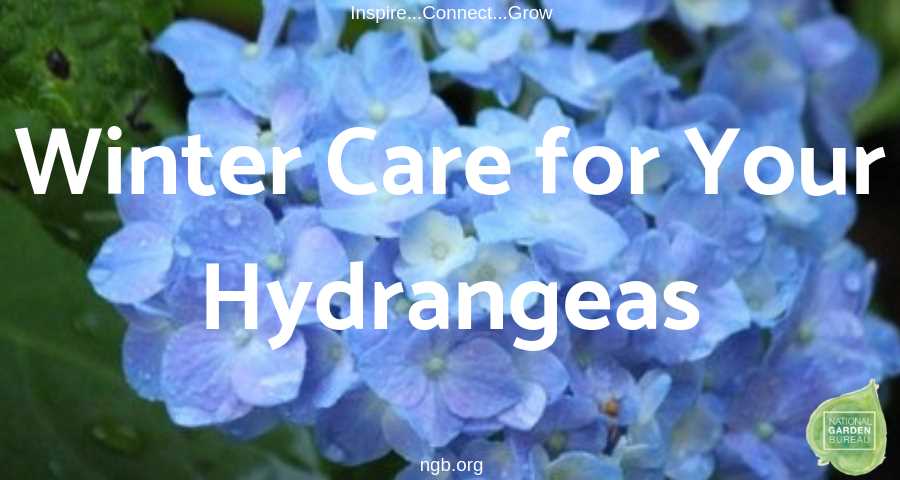
Inspecting the container and soil after wintering is an essential first step in caring for your large-leaved hydrangea. This step will help you assess the condition of the plant and ensure it is ready for the upcoming growing season.
Here are some important things to consider when inspecting the container and soil:
- Container condition: Check the container for any cracks or damage. If you notice any cracks, it is recommended to replace the container to prevent leakage and ensure proper drainage.
- Soil moisture: Assess the moisture level of the soil by sticking your finger about an inch deep. If the soil feels dry, it is a sign that the plant may need watering.
- Soil quality: Examine the soil for any signs of compaction or excessive water retention. Compacted soil can hinder the plant’s root growth, while overly wet soil can lead to root rot. If necessary, consider aerating the soil or adding organic matter to improve its structure.
- Presence of pests or diseases: Inspect the soil and container for any signs of pests or diseases, such as fungal growth or insect infestation. If you notice any issues, take appropriate measures to address them, such as using insecticides or fungicides.
By carefully inspecting the container and soil, you can identify any potential issues early on and take the necessary steps to ensure the health and vitality of your hydrangea plant.
Step 2: Pruning and Trimming the Hydrangea Large-Leaved
Pruning and trimming your Hydrangea Large-Leaved after wintering is essential to promote growth, maintain a healthy shape, and encourage the production of large and vibrant blooms. Follow these steps to properly prune and trim your hydrangea:
- Choose the right time: Pruning and trimming should ideally be done in early spring, before the plant starts to produce new growth. This allows you to remove any damaged or dead branches while still preserving the developing blooms for the upcoming season.
- Gather the necessary tools: Before you begin pruning, make sure you have the right tools on hand. These typically include sharp pruning shears, loppers (for thicker branches), and gloves to protect your hands.
- Inspect the plant: Take a close look at your hydrangea large-leaved and identify any branches that are weak, damaged, or dead. These should be pruned first to promote healthy growth.
- Remove deadwood: Using your pruning shears or loppers, carefully cut off any branches that are visibly dead. Make sure to cut them down to the base of the plant or where they meet a healthy bud or branch.
- Thin out crowded branches: If your hydrangea large-leaved has branches that are growing too closely together, trim some of them back to improve air circulation and reduce the risk of disease. Choose the weakest or smallest branches to remove.
- Shape the plant: To maintain a desired shape, selectively prune any branches that are growing in an undesirable direction or length. This will help create a more attractive and balanced appearance for your hydrangea.
- Prune for size control: If your hydrangea large-leaved has become too large for its container, you can prune it back more aggressively to manage its size. However, be cautious not to remove too much foliage, as this can affect the plant’s ability to produce blooms.
- Clean up: Once you have finished pruning and trimming, make sure to clean up any debris or fallen branches around the plant. This will help maintain a tidy and healthy growing environment.
By following these steps, you will ensure that your Hydrangea Large-Leaved is properly pruned and trimmed, setting the stage for a beautiful and flourishing display of blooms in the upcoming growing season.
Step 3: Checking for Pests and Diseases
After wintering, it’s important to check your hydrangea large-leaved plant for any signs of pests or diseases. Pests and diseases can cause damage to the plant and affect its growth and overall health.
1. Inspect the leaves and stems
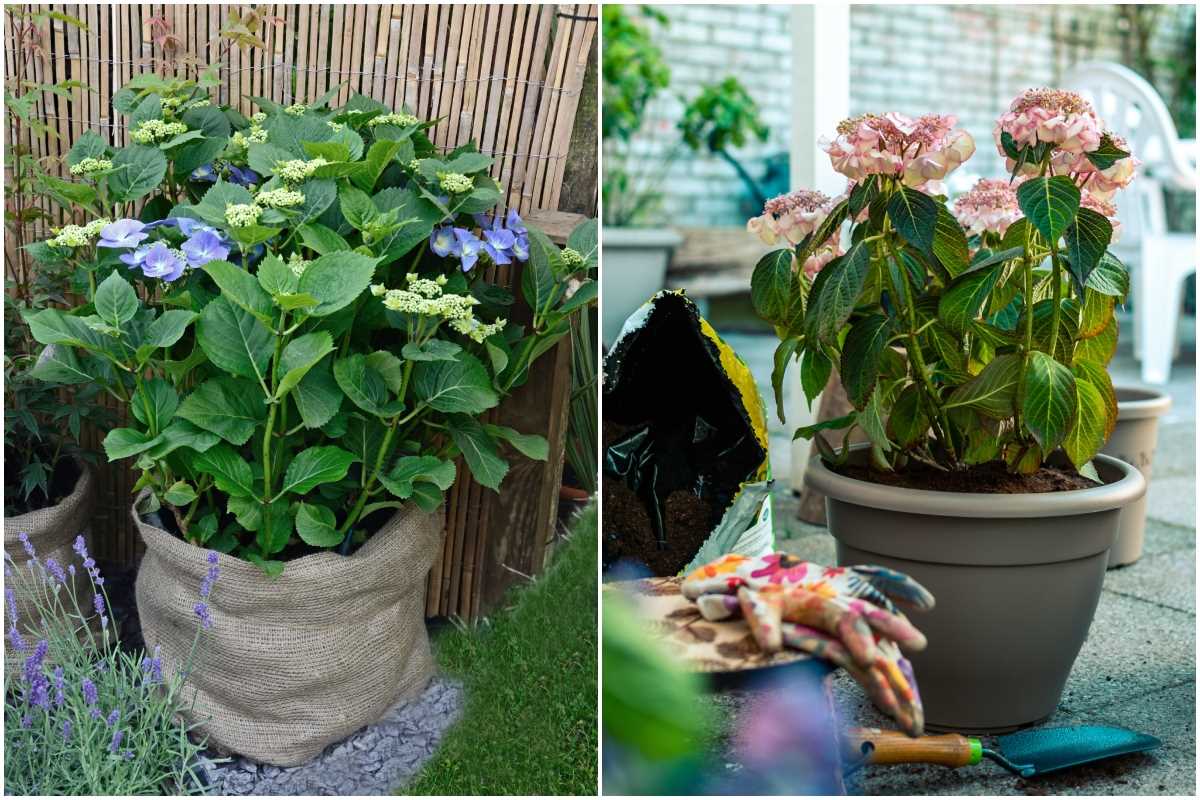
- Check the leaves for any holes, chew marks, or discoloration. These could be signs of insect infestation.
- Examine the stems for any signs of damage, such as wilting or splitting. This could indicate a disease or pest problem.
2. Look for pests
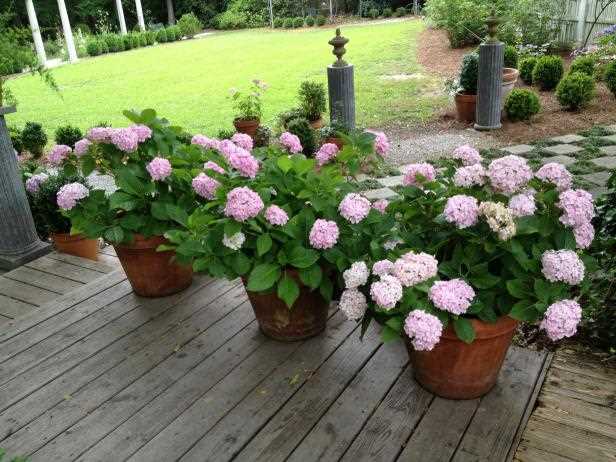
- Inspect the leaves and stems carefully for signs of pests, such as aphids, mealybugs, or spider mites. These pests can suck the sap from the plant and cause damage.
- Look for any visible insects or their eggs. Use a magnifying glass if necessary.
3. Check for diseases
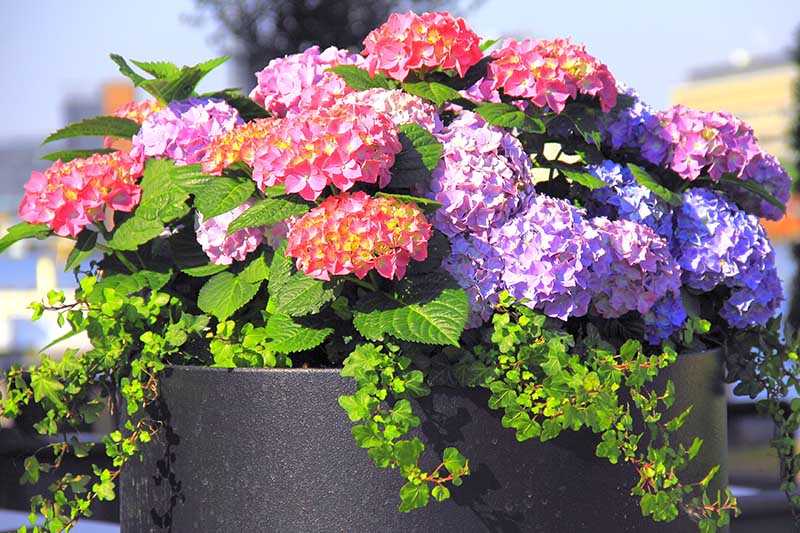
- Look for any signs of diseases, such as powdery mildew, leaf spot, or root rot. These diseases can weaken the plant and affect its ability to grow and produce flowers.
- Inspect the leaves, stems, and roots for any unusual growths, spots, or discoloration.
4. Take necessary actions
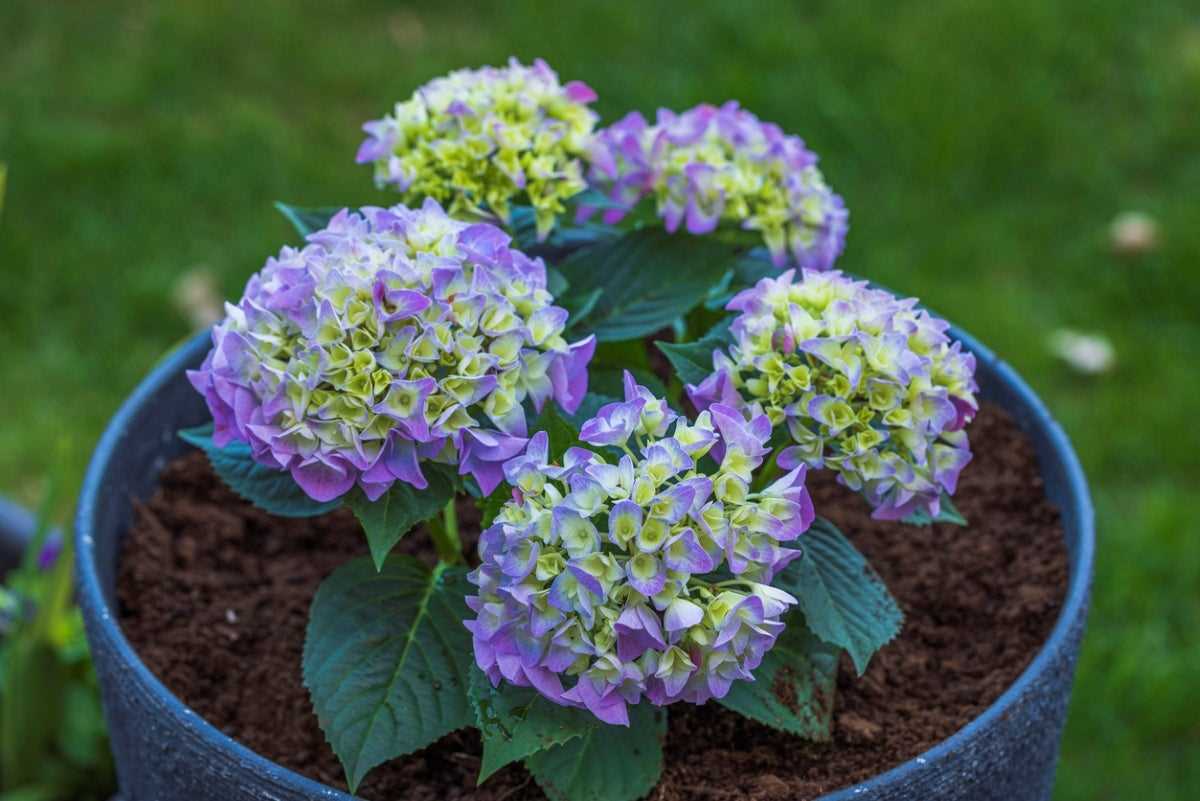
- If you find any pests, remove them from the plant manually or use an insecticidal soap or pesticide according to the instructions.
- If you notice any signs of diseases, trim the affected parts of the plant and dispose of them properly to prevent the spread of the disease.
- Ensure that the plant receives proper care, including regular watering, good air circulation, and appropriate fertilization, to prevent future pest and disease problems.
By checking for pests and diseases and taking necessary actions, you can ensure the health and vitality of your hydrangea large-leaved plant and promote its growth and blooming.
Step 4: Fertilizing and Watering the Hydrangea Large-Leaved
Proper fertilizing and watering are essential for the health and vitality of your Hydrangea Large-Leaved. Follow these steps to ensure your plant thrives:
1. Fertilizing
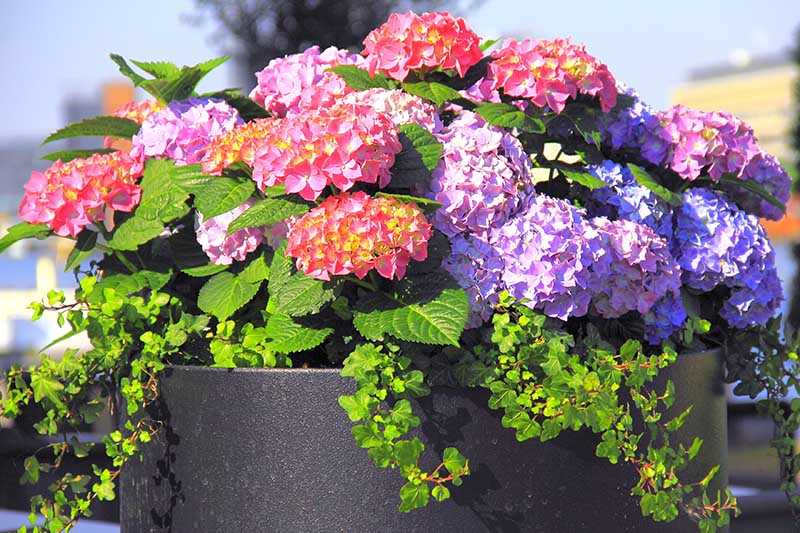
Hydrangeas benefit from regular fertilization throughout the growing season. Use a balanced, slow-release fertilizer specifically formulated for hydrangeas or acid-loving plants. Follow the manufacturer’s instructions for application rates.
Apply the fertilizer evenly around the base of the plant, taking care not to let it come into direct contact with the foliage or stems. Gently work the fertilizer into the top layer of soil, being careful not to damage the roots.
2. Watering
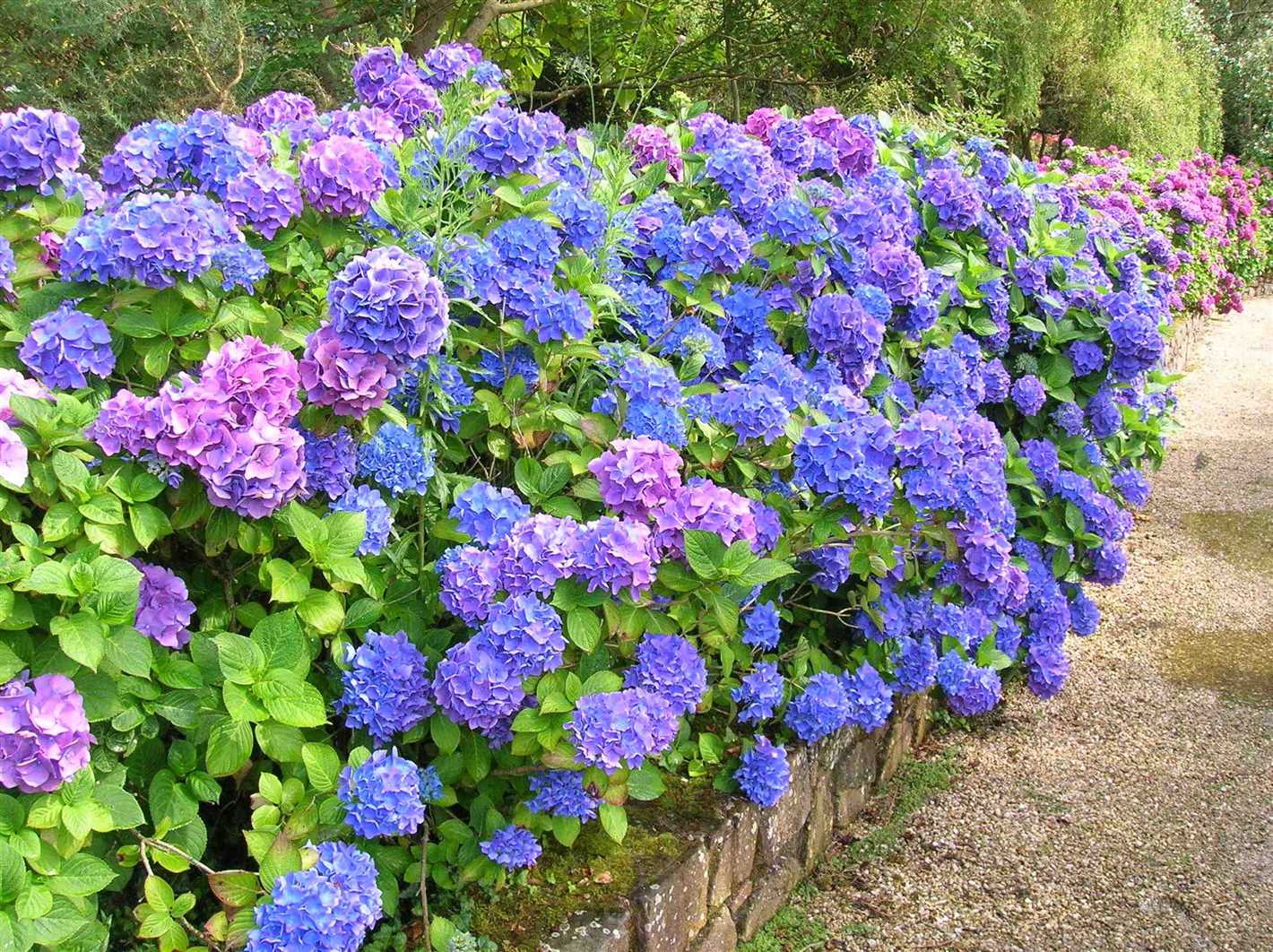
Hydrangeas have medium water needs and benefit from consistent moisture. Water deeply and thoroughly when the top inch of soil feels dry. Avoid overwatering, as Hydrangea Large-Leaved prefers well-draining soil.
Water in the morning or evening to minimize water evaporation. Use a soaker hose or drip irrigation system to provide deep watering, ensuring the water reaches the plant’s root zone.
Monitor the moisture levels carefully, as under-watering can result in wilting and leaf drop, while overwatering can lead to root rot.
3. Mulching
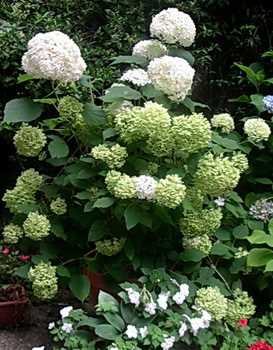
Applying a layer of organic mulch around the base of the Hydrangea Large-Leaved can help retain soil moisture, regulate soil temperature, and suppress weeds. Use a 2-3 inch layer of mulch, such as bark chips or compost, and spread it evenly around the plant, leaving a 1-2 inch gap around the stems.
4. Monitoring and Adjusting
Regularly monitor your Hydrangea Large-Leaved for signs of nutrient deficiency or excess. These may include yellowing leaves, stunted growth, or leaf burn. Adjust your fertilizing and watering practices accordingly to address any issues.
Remember to follow the specific care instructions provided by the nursery or plant supplier for optimal results.
Step 5: Providing Adequate Sunlight and Temperature
To ensure the healthy growth and blooming of your large-leaved hydrangea, it is crucial to provide it with adequate sunlight and maintain the right temperature conditions. Follow these guidelines:
- Sunlight: Hydrangeas thrive in bright, indirect sunlight. Choose a location where your container plant will receive at least 4-6 hours of sunlight per day. Avoid placing it in direct, intense sunlight as it can cause the leaves to burn and wilt.
- Temperature: Large-leaved hydrangeas prefer moderate temperatures between 60-75°F (15-24°C). Avoid exposing the plant to extreme temperature fluctuations, as it can stress the plant and affect its growth and blooming.
- Indoor placement: If you are growing your hydrangea indoors, choose a well-lit area near a window or a bright spot in your home. Rotate the plant occasionally to ensure even light exposure to all sides. Keep it away from drafts, such as air conditioning vents or open windows.
- Outdoor placement: When growing the hydrangea outdoors, select a location with partial shade, especially in hot climates. Providing some shade during the peak afternoon heat can prevent the plant from drying out and conserve moisture.
By providing the right amount of sunlight and maintaining suitable temperature conditions, you can help your large-leaved hydrangea thrive and produce beautiful, vibrant blooms.
Questions and Answers:
When should I start taking care of my hydrangea after wintering?
You can start taking care of your hydrangea after wintering in early spring, once the threat of frost has passed.
What should I do if the hydrangea has been damaged by frost?
If your hydrangea has been damaged by frost, you should prune off any dead or damaged branches and wait for new growth to appear.
How often should I water my hydrangea in a container?
You should water your hydrangea in a container regularly, making sure to keep the soil consistently moist but not waterlogged.
Can I fertilize my hydrangea in a container?
Yes, you can fertilize your hydrangea in a container. Use a slow-release fertilizer formulated for acid-loving plants, and apply it according to the package instructions.
Should I provide any additional protection for my hydrangea in a container during the winter?
It is a good idea to provide some additional protection for your hydrangea in a container during the winter, such as wrapping the pot in burlap or moving it to a sheltered location.







